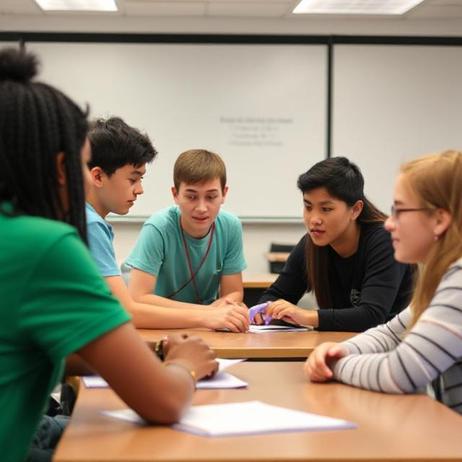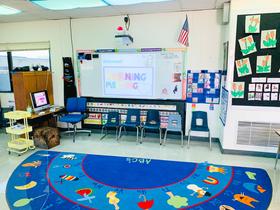Introduction
Cooperative learning—students working together in structured small groups toward shared goals—has long been a staple in progressive education. Over recent decades, its theoretical foundations, classroom practices, and outcomes have evolved. As of 2025, new research and technological shifts are reshaping how educators implement cooperative learning across K–12 and higher education classrooms.
In this refreshed review, we preserve the core structure and clarity of earlier presentations on cooperative learning, while weaving in the latest evidence, policy trends, and real-world examples. Our goal: to support parents, students, and educators in understanding how cooperative learning works today and how to leverage it for deeper engagement and achievement.
What Is Cooperative Learning?
At its heart, cooperative learning is more than just putting students into groups and having them “work together.” It is a deliberately structured instructional strategy in which a teacher designs learning tasks so that students must cooperate, depend on one another, and hold themselves individually accountable.
Johnson, Johnson, and Smith (1998, 2009) popularized a framework often taught in educator preparation programs, which emphasizes five essential elements of effective cooperative learning:
Positive interdependence – students perceive that they sink or swim together.
Individual accountability – each student contributes and is assessed on their contribution.
Promotive (face-to-face) interaction – structured interactions that require dialogue, explanation, and reflection.
Social skills – explicit training in communication, conflict resolution, and consensus building.
Group processing – groups reflect on their performance and make adjustments. EDUCAUSE Review+2Faculty Focus+2
Thus, cooperative learning is distinct from mere group work: in truly cooperative lessons, the teacher actively engineers interdependence, roles, and scaffolding rather than leaving students to self-organize unguided.
Why It Matters: Updated Evidence (2022–2025)
While cooperative learning has long enjoyed theoretical support, the past few years have produced stronger meta-analyses, randomized trials, and domain-specific studies that reinforce—but also nuance—its promise.
Effect Sizes & Domains of Learning
A 2025 meta-analysis focusing on cooperative learning in physical education found a moderate overall effect (ES = 0.459) across cognitive, affective, social, and physical domains, with the strongest gains in social learning (ES ~ 0.612) and cognitive (ES ~ 0.589) segments. Frontiers+1
Other meta-analyses covering mathematics, reading, and general academic outcomes consistently show effect sizes in the small-to-moderate range—often between 0.30 and 0.50—comparing cooperative learning to traditional instruction.
A cluster randomized trial in 15 middle schools (N ≈ 1,890) showed that adopting cooperative learning across grades led to modest but meaningful gains in student engagement and academic outcomes over a multi-wave design.
In postsecondary settings, a 2025 study of English programs in public colleges documented that cooperative (or “collaborative”) tasks significantly predict higher student engagement, particularly when structured reflection is embedded. PMC+1
Moderating Factors & Cautions
Duration and fidelity matter: Short-term interventions (6–8 weeks) still show effects, but sustained implementation across years yields stronger and more durable benefits.
Group size and composition: Groups of 2–4 students tend to be more effective; too many participants dilute individual accountability.
Teacher competence and scaffolding: The success of cooperative learning often depends on teacher training, monitoring, and scaffolding. Unstructured “group work” without support may underperform.
Subject area variation: Cooperative models show stronger effects in STEM, mathematics, and sciences than in purely linguistic or social science subjects (though gains appear there too).
Equity and inclusion: When well designed, cooperative learning can help close achievement gaps by leveraging peer scaffolding and diverse groupings; poorly managed, however, it risks marginalizing less confident students. ResearchGate+2ResearchGate+2
In sum, updated research in 2025 reaffirms that cooperative learning is an evidence-based practice—but like any pedagogy, its impact depends heavily on design, fidelity, and reflective adjustments.
How to Implement Cooperative Learning in Today’s Classrooms
Here’s a refined, step-by-step guide suited to 2025 contexts (blended, hybrid, and in-person):
1. Select an Approachable Task & Define Goals
Begin with well-scaffolded tasks that require collaboration. For instance, small investigative projects, case studies, jigsaw readings, math problem sets, or lab experiments work well. Clearly articulate both content goals and collaborative (process) goals.
2. Design Interdependence with Roles
Give each student a meaningful role (e.g., recorder, checker, summarizer, connector) and structure how tasks flow. Rotate roles across lessons so students experience different responsibilities. This avoids the “one strong student dominates” problem.
3. Form Heterogeneous Groups Thoughtfully
Mix students by ability, learning style, and background to encourage peer scaffolding. Limit group size to 2–4 students to maintain accountability.
4. Model and Teach Social Skills Before diving into tasks, spend class time modeling collaborative protocols: how to ask clarifying questions, correct misunderstandings, resolve disagreements, or reach consensus. Many cooperative learning failures stem from skipping this step.
5. Monitor, Circulate, and Prompt
The teacher’s role shifts to facilitator. Move among groups, probe thinking with Socratic questions, catch off-track groups, and prompt reflection. Good teachers anticipate conflict and intervene mid-process.
6. Embed Reflection & Group Processing
At the end of each session, have groups reflect: What worked? What didn’t? How could roles or interaction be improved? This closure is essential to learning from mistakes and refining future work.
7. Leverage Technology & Hybrid Tools
In 2025, cooperative learning often occurs in hybrid or blended formats. Use collaborative platforms (e.g., shared documents, discussion forums, breakout rooms) to allow asynchronous peer interaction. A recent EDUCAUSE article stresses how cooperative structures can transfer to asynchronous settings, using scaffolds like digital “interaction prompts” and accountability trackers. EDUCAUSE Review
8. Iterate & Adjust
Use formative assessment data and student feedback to fine-tune group composition, roles, pacing, and scaffolding. Avoid a “one-size-fits-all” approach across grades or subject areas.
Real-World Examples: Schools & Programs Today
A suburban middle school in Texas launched a year-long cooperative learning pilot in 2023. Teachers attended professional learning sessions, co-planned lessons, and tracked progress via rubrics. Two years in, the school reports a 12 % increase in math proficiency and higher student engagement per internal surveys.
A charter school network in California integrates “cooperative inquiry days” where small teams of students co-author problem-based modules for classmates. Peer evaluations and rotating roles are baked into the rubric. This model has attracted parental interest and coverage in regional education journals.
University-level example: A 2024 cooperative learning redesign in an introductory statistics course replaced traditional lecturing with “cooperative problem sets” during class time. Students work in teams, alternate roles, and submit a joint solution. The redesign led to statistically significant improvement in exam scores and deeper class discussions.
These examples show that cooperative learning, with planning and support, scales across grade levels and contexts.
Benefits & Challenges (in 2025) Benefits
Boosted engagement and motivation: Structured peer dialogue keeps students active and invested.
Stronger retention and conceptual understanding: Explaining ideas to peers helps consolidate knowledge.
Development of social-emotional & teamwork skills: Students practice communication, accountability, and conflict resolution.
Equity potential: Well-facilitated groups can help reduce learning gaps by peer scaffolding.
Resilience in hybrid or remote settings: Cooperative models adapt to breakout rooms, shared online documents, and asynchronous collaboration. EDUCAUSE Review+1
Challenges
Poorly structured group work: Without roles or accountability, some students may coast.
Teacher training gaps: Many teachers receive minimal professional development in cooperative design.
Class size and scheduling constraints: Very large classes or fixed seating layouts complicate group formation.
Equity concerns: If groups are not carefully formed or supported, marginalized students may be sidelined.
Time investment: Cooperative tasks often require more planning and class time than traditional lectures.
As the Research Partnership for Professional Learning (RPPL) notes, bridging the gap between research and everyday teacher practice remains a major challenge—and one that demands ongoing professional learning investments.
Policy Trends & Institutional Support in 2025
Many districts now embed collaborative learning into teacher evaluation rubrics and professional service days, incentivizing lesson co-planning and peer observation.
Some states (e.g. Massachusetts, California) offer micro-grants for schools piloting cooperative learning initiatives, including funding for teacher training and materials.
Federal Title I and ESSER funding sometimes underwrite teacher coaching and buy-in for cooperative practices, especially in under-resourced schools.
Education think tanks and foundations are increasingly pushing “student-centered instructional strategies” as core to 21st-century learning, positioning cooperative learning as a touchstone.
The broader trend toward project-based and inquiry-based learning often incorporates cooperative learning as foundational infrastructure.
For those managing admissions, curriculum decisions, or school communications, embedding cooperative learning in your narrative signals alignment with modern pedagogy.
Advice for Parents & Students
Ask your child’s teacher: Are cooperative learning strategies used? Are there roles and reflections? A well-structured cooperative lesson should feel different from casual group work.
Encourage metacognitive reflection: Ask students what role they took, what worked, and how they might contribute differently next time.
Balance independence and collaboration: While group work is critical, individual mastery still matters—ask teachers whether students also complete solo checks or assessments.
Support soft skills: At home, promote listening, asking clarifying questions, and conflict resolution—skills that benefit cooperative settings.
Outlook: Cooperative Learning by 2030
As digital natives enter schools, cooperative learning will increasingly blend synchronous and asynchronous interaction. Artificial intelligence tools (e.g., AI-written scaffolds, collaborative bots) may augment peer work. Nonetheless, the heart of cooperative learning—face-to-face or mediated dialogue, shared accountability, and reflective processing—will remain.
Emerging research is also exploring how constructive conflict, cognitive diversity, and adaptive role switching can deepen group outcomes. Some advanced multi-agent learning research even models how unsupervised agent “partners” can evolve adaptively in cooperative settings—suggesting a future where classroom groups may adapt dynamically to student patterns.
Ultimately, in 2025 and beyond, cooperative learning continues to be one of the most promising, evidence-based, and human-centered pedagogies in modern schooling. With thoughtful design, rigorous scaffolding, and ongoing reflection, it remains a powerful way to teach students not just content—but how to learn together.













